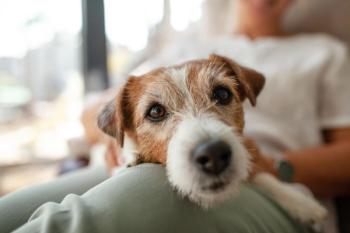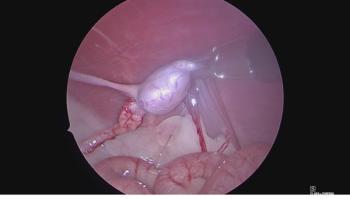
Cats Display Different Behaviors to Indicate Food Palatability
The study results could be applied to tests that can be utilized to create tests to help improve the palatability of veterinary pharmaceuticals for cats.
In a recent study published in
Food palatability considers several factors, including
A
The authors examined behavioral indicators of food palatability in 34 pet cats whose owners were recruited through the Faculty of Veterinary Medicine at the University of Helsinki. To ensure the study population closely resembled the target cat population, in regards to acquired taste preferences, the authors selected only two exclusion criteria: gingivitis and clinical illness.
Cats were offered three food types: favored food (FF), non-favored food (NFF), and favored food containing a placebo tablet (TFF). The authors defined FF as “food preferred by the cat and with a consistency allowing a tablet to be hidden in it.” NFF was “something edible the cat was unlikely to eat…but not irritating the mouth, respiratory system, or eyes.” Each owner used their cat’s individual food preferences to select FF and NFF. The placebo tablet was a novel formulation under development that the cats had not previously experienced.
Owners conducted the experiment over two consecutive days at their homes. For each day, there were three blocks of trials, spaced 5‒60 minutes apart. Each block consisted of three trials, with one food type per trial. Within each block, owners presented each food type, one immediately after the other. To prevent a cat from learning which food type to expect next, owners followed the authors’ instructions to pseudo-randomize and balance the food order between blocks.
Owners used video cameras to record cat behavior before, during, and after eating, or refusing to eat. They were not allowed to force a cat’s participation. Two trained observers, who were blinded to the food types, independently viewed the recordings to determine the frequency of 16 behaviors; these behaviors were selected during the study’s pilot phase.
The authors used odds ratios and 95% confidence intervals to quantify the differences between food types for each behavior.
Significant differences in twelve behaviors, when comparing NFF and FF, were observed. Of these twelve, five were deemed suitable for differentiating NFF from FF: four (‘flick ears backwards,’ ‘lick nose, not eaten,’ ‘flick tail,’ and ‘groom body’) occurred more frequently with NFF, and one (‘lick lip’) was more frequently observed with FF.
When comparing TFF and FF, the authors observed significant differences in two behaviors: ‘shake head’ occurred more frequently with FF, and ‘drop item’ occurred more frequently with TFF. Regarding the results of the ‘drop item’ behavior, the authors suggested improving the tablet’s formulation, in terms of taste and/or mouth feel. Cats were not bothered by the tablet’s smell.
Inter-observer agreement was highest for the ‘eat’ and ‘shake paw’ behaviors (98.3% for each). ‘Flick ears backwards’ and ‘lick nose after eating’ had the lowest inter-observer agreements (72.7% and 56.8%, respectively); agreement for the latter behavior was low because of difficulty differentiating this behavior from other post-eating licking behavior.
Given the high inter-observer agreement (average, 89.4%) for the behaviors, the authors verified the feasibility of conducting the experiment at cat owners’ homes. However, allowing the owners to select FF and NFF may have been a confounding factor, since some owners did not know their cat’s food preferences.
For future food palatability studies, authors suggested blinding owners to food type and providing a more exact definition of NFF.
Authors concluded that the study results “have practical applicability in designing a novel palatability test to be utilized in developing veterinary pharmaceuticals with improved palatability for cats.”
Dr. JoAnna Pendergrass received her doctorate in veterinary medicine from the Virginia-Maryland College of Veterinary Medicine. Following veterinary school, she completed a postdoctoral fellowship at Emory University’s Yerkes National Primate Research Center. Dr. Pendergrass is the founder and owner of JPen Communications, LLC.
Newsletter
From exam room tips to practice management insights, get trusted veterinary news delivered straight to your inbox—subscribe to dvm360.




